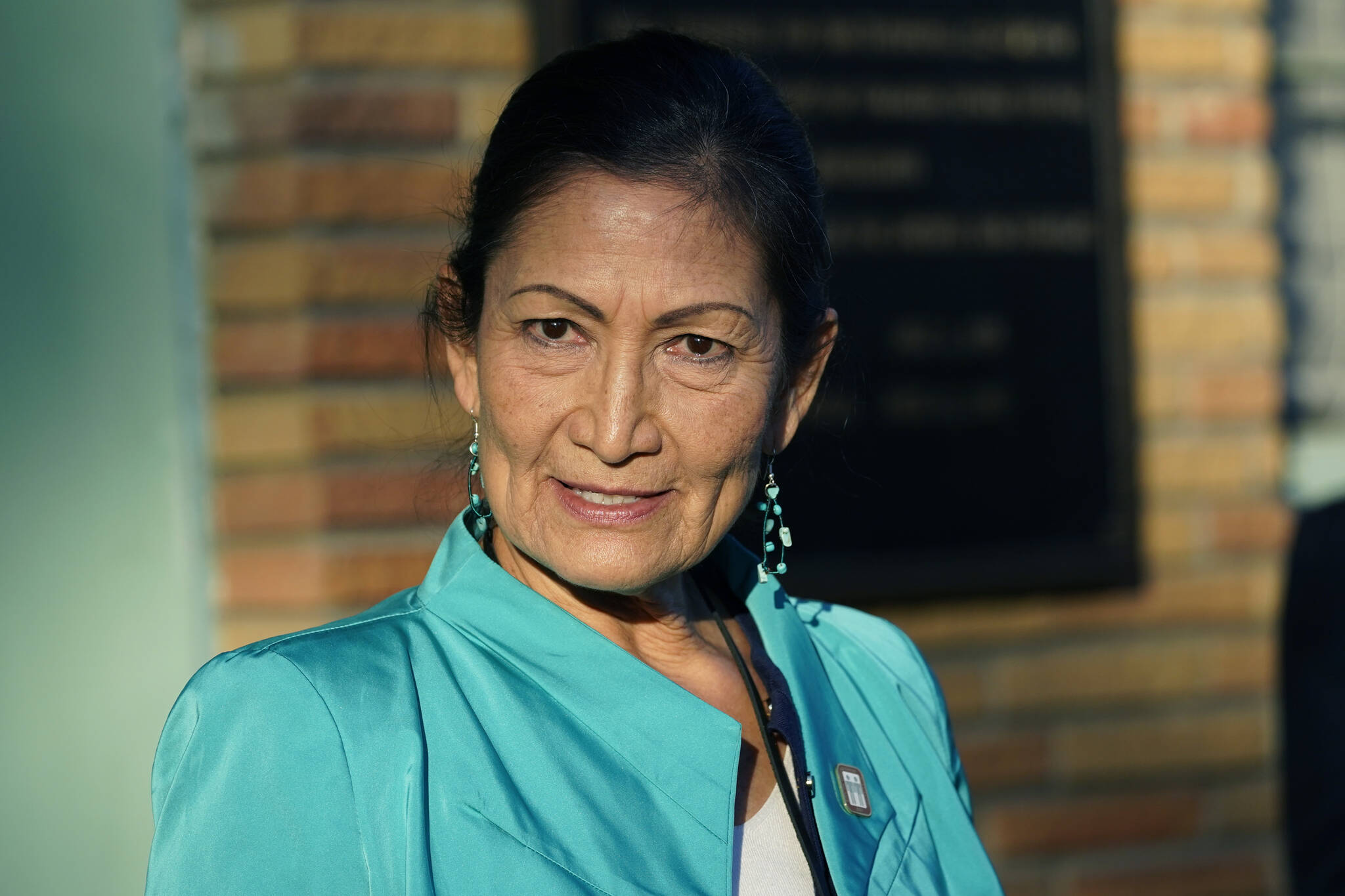Felicia Fonseca
Associated Press
The Interior Department is on the verge of releasing a report on its investigation into the federal government’s past oversight of Native American boarding schools.
Interior Secretary Deb Haaland told journalists during a call Wednesday that the report will come out in April but didn’t specify a date. She first outlined the initiative in June, saying it would uncover the truth about the loss of life and the lasting consequences of boarding schools.
Starting with the Indian Civilization Act of 1819, the U.S. enacted laws and policies to establish and support boarding schools for Native Americans across the nation. For over 150 years, Indigenous children were taken from their communities and forced into these assimilation-focused schools.
Discoveries of the remains of more than 1,000 children in Canada renewed a spotlight in the U.S. and stirred strong emotions among tribal communities that included grief, anger, reflection and a deep desire for healing.
“We have been very cognizant of the fact that we need to create a safe space for people to share information and seek resources,” Haaland said Wednesday. “We recognize this is a very traumatic experience for many people.”
The Interior Department did not immediately respond to further questions from The Associated Press.
The work on boarding schools will include compiling and reviewing records to identify past schools, locate known and possible burial sites at or near those schools, and uncover the names and tribal affiliations of students, Haaland said.
Haaland made the remarks in highlighting the work she and others in the Interior Department have done since she took over the agency a year ago. Haaland, of Laguna Pueblo in New Mexico, is the first Native American ever to hold the post — raising the hopes of Indian Country for significant changes in an agency that has broad oversight of tribal affairs.
She summed up the work as impactful. She noted the administration’s response to climate change, the coronavirus and to the need for improvements to roads, broadband and other infrastructure. Tribal leaders have welcomed infusions of funding but said those investments need to be sustained in the future.
Specifically for Native American tribes, Haaland pointed to the restoration of the original boundaries for Bears Ears National Monument in southern Utah; a push to create a buffer around Chaco Culture National Historic Park in New Mexico to protect the area that’s sacred to pueblo tribes from new oil and gas leasing; and a commitment to scrub a derogatory term for Native American women from geographic features on federal land.
Haaland was joined in the call Wednesday by fellow New Mexican Tanya Trujillo, an assistant secretary for water and science at the Interior Department. Trujillo outlined investments in water infrastructure that she said will help build resiliency in the system and ensure there’s enough for the natural environment that relies on it.
The U.S. West is in the midst of a megadrought that has shrunken rivers and key water sources faster than expected. On Wednesday, Lake Powell on the Colorado River dropped to its lowest level ever, raising new concerns about power produced at the dam that holds it back on the Arizona-Utah border.
Already, California, Nevada, Arizona and Mexico are taking a mix of voluntary and mandatory water cuts from the river.

